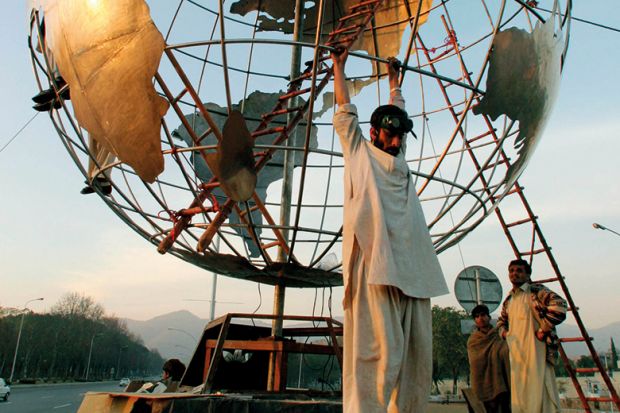A joint staff recruitment drive from India’s technology universities could become a cost-effective strategy to boost internationalisation, but experts have warned that the institutions must remove further barriers if they want to attract and retain foreign faculty.
The country’s 23 Indian Institutes of Technology (IIT) are set to pool their resources to hire academics from abroad, a move announced after a meeting of IIT directors and officials of the Ministry of Human Resource Development (HRD).
According to local news reports, each IIT has been given responsibility for recruiting scholars from one or more regions of the world – not just for itself, but on behalf of other IITs as well.
India’s universities have historically been very weak when it comes to internationalisation, and the number of foreign academics in the country is very low.
Alan Ruby, senior scholar at the Alliance for Higher Education and Democracy at the University of Pennsylvania, said that the initiative “is a bit like universities hiring agents to represent them in particular international student markets”.
“They get someone who specialises in that market and knows what the pressure points are in recruiting. It is cost effective,” he said.
He added that it might also make it easier for scholars interested in working in India by giving them “one point of communication for 23 potential employers”.
However, he warned, “the IITs will struggle to recruit talent from abroad” until the government “sorts out the visa and length of contract issues for non-resident Indians and foreigners”.
Prakash Javadekar, the minister for human resource development, has promised to ease visa guidelines that restrict foreigners working as academics on a permanent basis, but no timeline for these changes has been announced.
Pushkar, director of the International Centre Goa, which describes itself as a non-profit autonomous society that brings together academics and creative people from India and around the world, predicted that the collaboration might be “a strategy for older IITs to help out the newer IITs with international faculty”. However, he was sceptical about the value of such an initiative.
“If an institution recruits a director and department heads with strong international linkages, why take the messy path of collaboration with other IITs to recruit faculty?” he asked.
“I do not see how IITs in far-flung locations with very basic infrastructure can attract and more importantly retain foreign faculty. Indeed, many IITs have not done particularly well in hiring Indians with foreign degrees, even from the best institutions abroad, either because of their location or the biases of their selection committees,” he added.
He also questioned whether IITs had enough funding to pay salaries that would attract foreign academics.
“In broad terms, India has done pretty badly with making Indian institutions attractive for either foreign students or foreign faculty. It is very likely, based on past experiences with similar attempts, that this collaborative initiative too will fizzle out,” he said.
Craig Jeffrey, director and CEO of the Australia India Institute at the University of Melbourne, said that one institution recruiting for others is “a difficult proposition in academia, where universities typically have quite specific criteria for shortlisting. There is also a risk that the primary recruiting university will cherry-pick the very best candidates.”
He added that it was “unclear why the IITs are focusing on recruitment to positions rather than creating joint positions or concentrating on fellowship opportunities where there might be more potential for involving top foreign scholars”.




